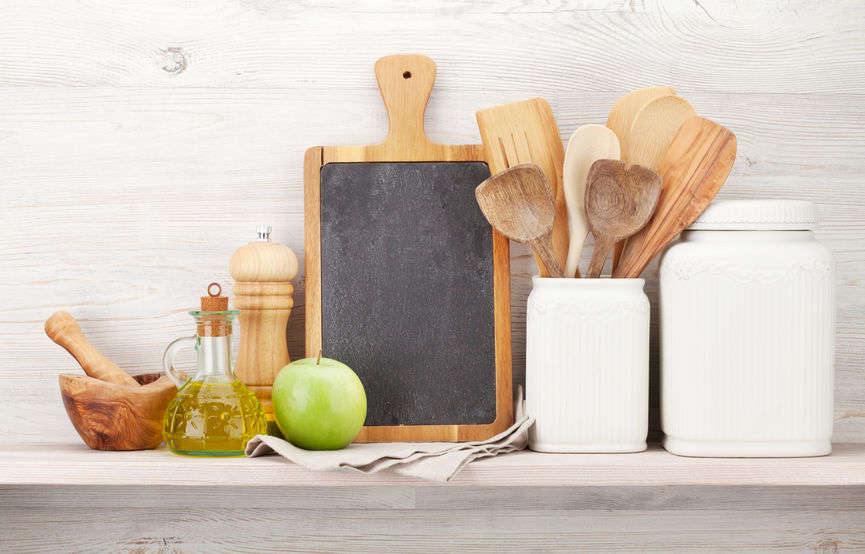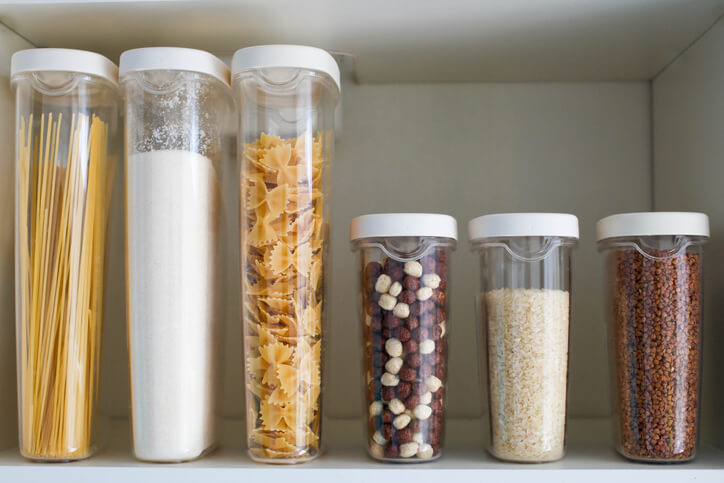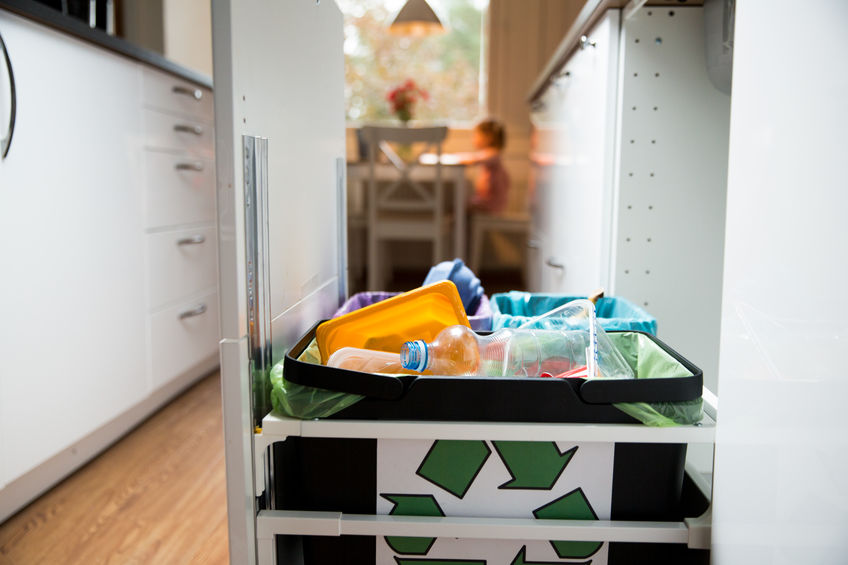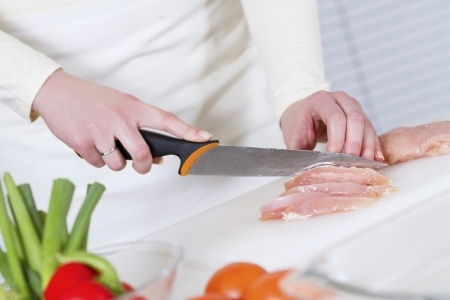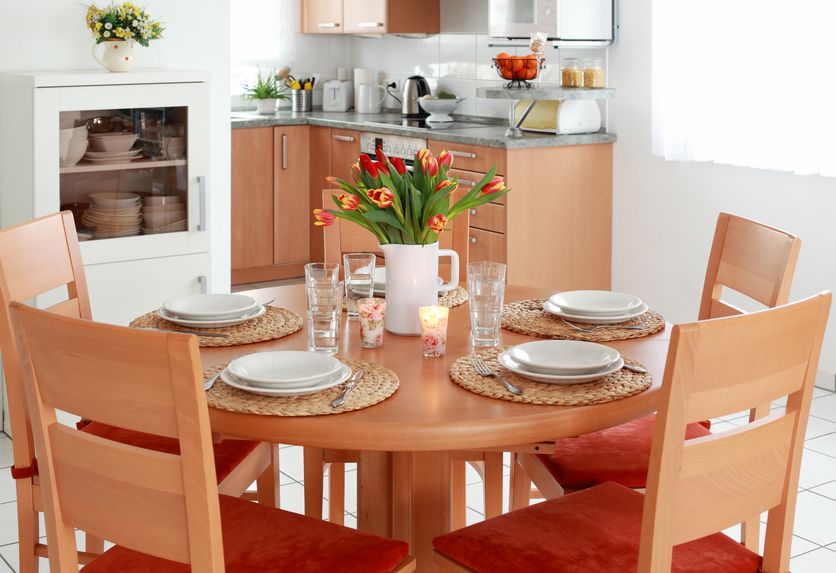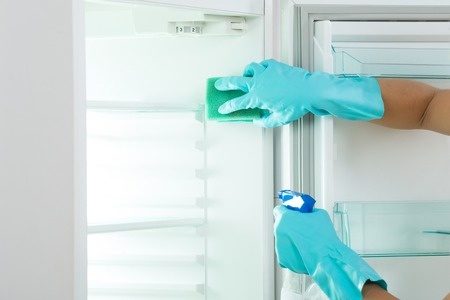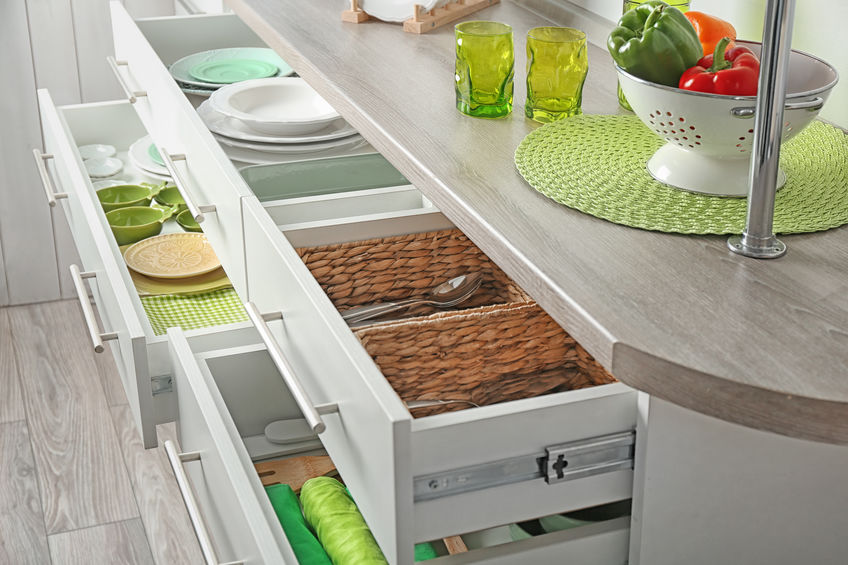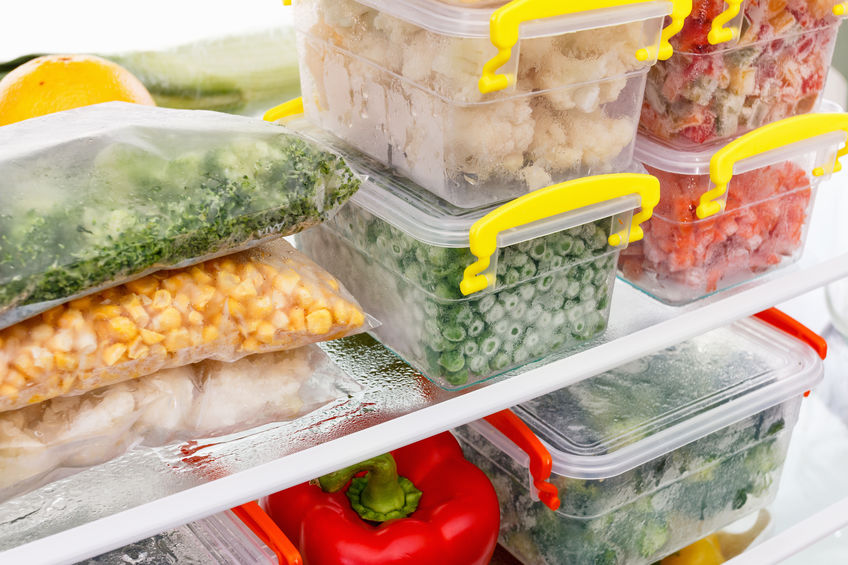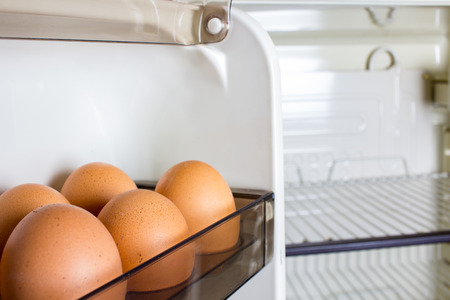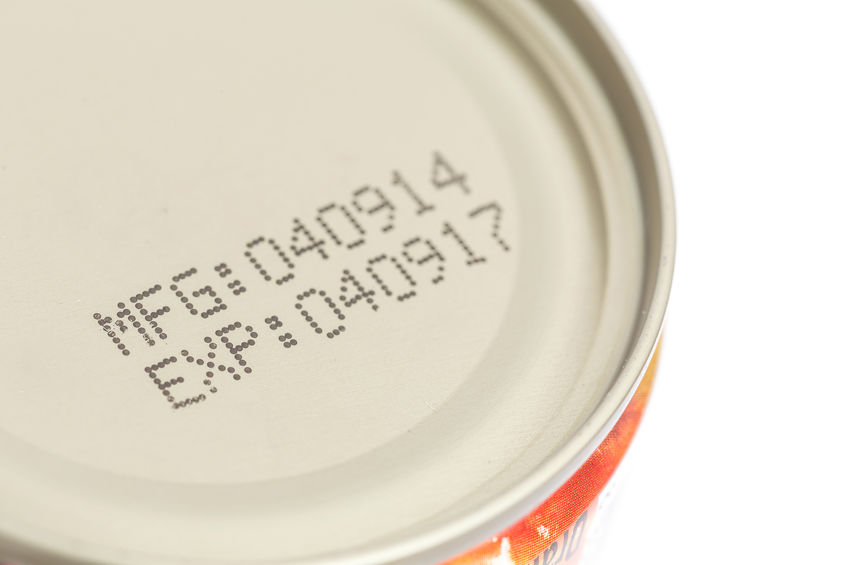Easy Kitchen Organizing Tips
Easy kitchen organizing tips. To get the most out of your kitchen, consider all the activities your family does there.
Then, reorganize the space to accommodate those activities. Well, duh. That seems obvious, doesn't it?
But often, we just put things away in the closest place we can find at the time without giving it a second thought. So think about it. These easy kitchen organizing tips can help.
Easy Kitchen Organizing Tips for Activity Centers
What are your garnishing tools doing in the top drawer on the kitchen island? How often do you use those things?
Shouldn't they be in the back of the bottom drawer with the cake-decorating tips? And where is the paring knife you use every day? Oh, that's in the back of the bottom drawer!
I've organized my kitchen into five activity centers:
- a cooking center
- a food storage center
- a pet feeding center
- a recycling center
- a study center
Let's take a peek at each of these kitchen organizing tips in turn.
Create Cooking Centers
Cooking can be subdivided into smaller sub-activities. These easy kitchen organizing tips can help get things rolling. Such a plan not only saves steps, but it also enables two people to work at once without falling all over each other.
Organize your cooking area into these groups:
- Cooking (as in the actual heating of food): Place all the things needed for cooking around the range. Pots and pans go in the cabinets directly underneath. Hang hot pads by the range. Put a jar of utensils on top of the range, but include only those you use at least once a week.
- Slicing and dicing: Near the sink, create a workstation with all the paraphernalia you need to wash, peel, and chop foods, including knives, butcher block, peelers, scrub brushes, bowls, etc.
- Food preparing: Here's where you would group scrapers, colanders, mixing bowls and spoons, whisks, measuring cups and spoons, blenders, and your food processor. Try to contain them all in one cabinet.
- Baking: Arrange everything you'll need for baking in one cabinet. Then organize the items inside plastic storage containers for grouping like items.
I put our cake and ice cream sprinkles collection in a big plastic box. We know where to go when it's time to frost cupcakes for class.
Nearby, in a second see-through container, we'll find baking soda, baking powder, and sugars, everything we need to make cupcakes.
Easy Kitchen Organizing Tips for Food Storage
No pantry? No problem. These kitchen organizing tips work even without a built-in pantry. Assign some cabinets to the task.
Ideally, choose a few large cabinets close to your refrigerator and stove. Most kitchens have a lot of cabinets and drawers, but they are usually a chaotic mess.
You buy marinara sauce only to find three jars hidden behind the olive oil. The solution? Organize your storage so you know what you have and where you have it.
Group foods by type. Don't just stuff items into the first open space you see. Instead, stock foodstuff in the same place each time, grouping like items.
In my pantry, I put crackers, chips, and other snack foods on the highest shelf, which is not easily reachable, and cereal and other breakfast items on the second shelf.
The third shelf contains pasta, pasta sauces, and boxed pasta and rice mixes; the fourth contains canned vegetables and fruit; and the bottom contains soups and canned beans.
This way, I can tell at a glance what I have and what I need to buy. If there's no oatmeal on the second shelf, I know there is no oatmeal in the house.
Place rarely used items on the tallest shelves and in the back of cabinets. Place your family's favorite foods in the middle, at eye level.
Heavy items, such as cans, should go near the bottom. To maximize storage space, use lazy Susans, pullout shelving, and wire racks. Repackage shelf hogs.
Get rid of half-empty boxes of cereal and place the cereal in smaller, airtight containers. Then, label them with the contents and the expiration date. Unlike wine, food doesn't get better with age!
Finally, store bulk purchases—you know, the 17 boxes of pasta, 40 cans of chicken noodle soup, and 100 rolls of paper towels you got for a steal at the club store—in the garage or downstairs in the basement.
Call this your overflow pantry, and replenish your kitchen supplies as needed.
Create a Pet Feeding Center
Hey! You're not the only one chowing down in here. And yes, you can feed the pooch in the kitchen without letting the whole place go to the dogs. These kitchen organizing tips can help.
Stash the less-than-fragrant dog or cat food dish out of the way of (foot) traffic lanes. Try to locate the food nearby. I keep our trio of bowls - two food dishes and one big water dish - underneath an inconspicuous corner table.
The food is tucked into a nearby cabinet, out of sight but within reach when our cats need chow.
Easy Kitchen Organizing Tips for a Recycling Center
Under the sink, keep plastic tubs for recycling aluminum, glass, and plastic. Let the kids do this. They'll love it.
They'll even like taking it out to the garage. Really. And while you're at it, start a composting pail (with a tight-fitting lid) with non-meat table scraps. You can add this to your composting pile or worm bin. (Another excellent kid project.) Maybe keep your dishwashing detergent here, too.
While we're thinking about the sink, let's discuss what not to keep under it. Do not store poisons under the sink, such as cleaners and bleach.
It's a bad idea with little ones in your home. This is different from when you want to have logical stuff (like drain cleaner) handy.
Households with kids should store cleaners and other dangerous brews in the garage, high and out of reach.
Easy Kitchen Organizing Tips for a Study Hall
Many moms, including me, like their kids to do their homework in the kitchen so they can answer kiddie questions while they work.
If your kids study here, keep all supplies close at hand so they don't continually jump up and down (and prolong the whole homework process) in search of erasers, compasses, protractors, dictionaries, etc.
Empty a cabinet and create a small office supply center with notebook paper, construction paper, folders, pencils, pens, rulers, calculators, markers, crayons, and whatever else your kids use. Leave room to store ongoing projects, such as term papers and note cards.
Although younger kids don't do homework, they do do artwork. For younger kids, since the kitchen is the room best suited to cleaning up messes, it's the perfect place for an art center.
I use a cleaning-supply caddy as a portable home for coloring books, paper, markers, and crayons. I also have a three-ring binder with zip-close clear plastic cases for stickers and pipe cleaners. You could also use a storage tower with see-through drawers for art supplies.
- Clean Home
- Kitchen
- Easy Kitchen Organizing Tips
